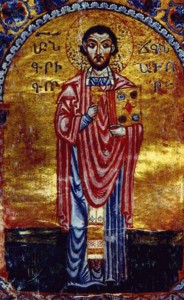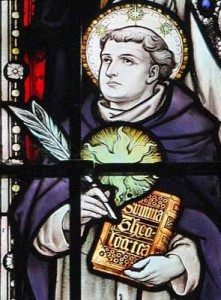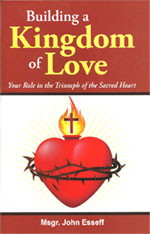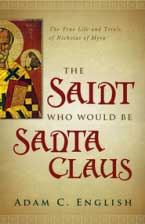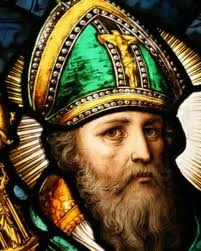
[powerpress]
Join Bruce and I as we discuss with Dr. Philip Freeman, PhD, author of “St. Patrick of Ireland”, the life of this great saint.
A reading from the Confession of St Patrick (Conf 34,36,37,38,39)
“I give thanks to my God tirelessly who kept me faithful in the day of trial, so that today I offer sacrifice to him confidently, the living sacrifice of my life to Christ, my Lord, who preserved me in all my troubles. I can say therefore: Who am I, Lord, and what is my calling that you should cooperate with me with such divine power? Today, among heathen peoples, I praise and proclaim your name in all places, not only when things go well but also in times of stress. Whether I receive good or ill, I return thanks equally to God, who taught me always to trust him unreservedly. His answer to my prayer inspired me in these latter days to undertake this holy and wonderful work in spite of my ignorance, and to imitate in some way those who, as the Lord foretold, would preach his Good News as a witness to all nations before the end of the world.
How did I come by this wisdom which was not my own, I who neither knew what was in store for me, nor what it was to relish God? What was the source of the gift I got later, the great and beneficial gift of knowing and loving God, even if it meant leaving my homeland and my relatives?
I came to the Irish heathens to preach the Good News and to put up with insults from unbelievers. I heard my mission abused, I endured many persecutions even to the extent of chains; I gave up my free-born status for the good of others. Should I be worthy I am ready to give even my life, promptly and gladly, for his name; and it is there that I wish to spend it until I die, if the Lord should graciously allow me.
I am very much in debt to God; who gave me so much grace that through me many people were born again in God and afterwards confirmed, and that clergy were ordained for them everywhere. All this was for a people newly come to belief whom the Lord took from the very ends of the earth as he promised long ago, through his prophets: ‘To you the nations will come from the ends of the earth and will say, “How false are the idols our fathers made for themselves, how useless they are.” ‘And again: ‘I have made you a light for the nations so that you may be a means of salvation to the ends of the earth.’
I wish to wait there for the promise of one who never breaks his word, as he promises in the gospel: ‘They will come from the east and the west to take their places with Abraham and Isaac and Jacob,’ just as we believe the faithful will come from every part of the world.”
Prayer
We give you thanks, almighty God, for sending Saint Patrick to preach your glory to the people of Ireland. Grant that we who are proud to call ourselves Christians may never cease to proclaim to the world the good news of salvation.
(We make our prayer) through our Lord.
Through Christ our Lord .
Tags: catholic, catholic podcast, catholic prayer
This entry was posted on Tuesday, March 17th, 2015 at 12:19 am
You can follow any responses to this entry through the RSS 2.0 feed.
[powerpress]
Dr. Matthew Bunson discusses the life, times and teachings of St. Gregory of Narek
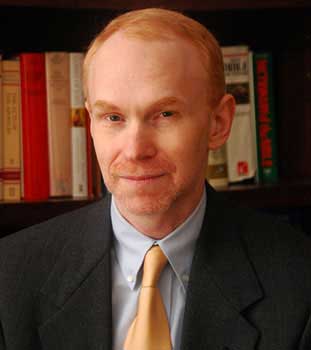 Born: 951 Rshtunik, Vaspurakan, Bagratid Armenia
Born: 951 Rshtunik, Vaspurakan, Bagratid Armenia
Died 1003 Narekavank, Vaspurakan, Armenia
Feast 13 October (Holy Translators day); 27 February (Roman Catholic Church)
For more on St. Gregory of Narek and his teachings visit this excellent website:
“Speaking with God from the Depths of the Heart”
From the Vatican Insider:
Pope Francis has approved the decision of the Congregation for Saints. The Armenian saint was born in 950 AD in present-day Turkey
An Armenian saint has been declared a Doctor of the Church. In last Saturday’s audience with the cardinal Prefect of the Congregation for the Causes of Saints, Pope Francis approved the proposal put forward by the Plenary Session of the Congregation, agreeing for the title of Doctor of the Universal Church to be conferred upon Gregory of Narek.
 St. Gregory, a priest and monk, was born circa 950 AD in Andzevatsik (formerly Armenia, present-day Turkey) to a family of writers. He died circa 1005 in Narek (formerly Armenia, present-day Turkey). His father, Khosrov, was an archbishop. Having lost his mother at a young age, Gregory was brought up by his cousin, Anania of Narek, founder of the local school and village. The saint lived most of his life in the monasteries of Narek (in what was once called Great Armenia), where he taught at the monastic school. He is considered one of Armenian literature’s greatest poets.
 The cult of St. Gregory of Narek will be marked on 27 February in the Roman Martyrology. He will be defined as “monk, doctor of the Armenians, distinguished for his writings and mystic scienceâ€.
 The papal decision comes just weeks before Francis is due to commemorate the centenary of the Armenian massacre on 12 April in St. Peter’s Basilica. The Medz Yeghern as the Armenian massacre is called, took place in 1915.
For more from Dr. Matthew Bunson check out his Discerning Hearts page
Dr. Matthew Bunson, Senior Fellow of the St. Paul Center for Biblical Theology, is one of the United States’ leading authorities on the papacy and the Church.
His books include: The Encyclopedia of Catholic History; The Encyclopedia of Saints; Papal Wisdom; All Shall Be Well; Encyclopedia of the Roman Empire; and The Angelic Doctor: The Life and World of St. Thomas Aquinas; The Pope Encyclopedia; We Have a Pope! Benedict XVI, the first Catholic biography of the Holy Father in the English language; the Encyclopedia of U.S. Catholic History; Pope Francis. His also the editor of OSV’s “The Catholic Answer” magazine.
This entry was posted on Tuesday, March 3rd, 2015 at 11:26 am
You can follow any responses to this entry through the RSS 2.0 feed.
[powerpress]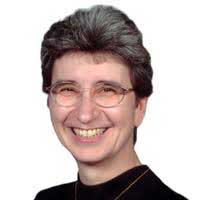
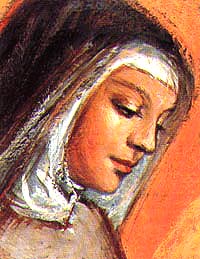 St. Agnes of Bohemia is one of my favorite saints and it has a lot to do with Sr. Joan Mueller, the master storyteller. St. Agnes was the great admirer and then great friend of St. Clare. Her tale is as dramatic and compelling as any novel written.  The text below is a brief overview of her life, but do yourself a favor and listen to the great tale as told by Sr. Joan.
St. Agnes of Bohemia is one of my favorite saints and it has a lot to do with Sr. Joan Mueller, the master storyteller. St. Agnes was the great admirer and then great friend of St. Clare. Her tale is as dramatic and compelling as any novel written.  The text below is a brief overview of her life, but do yourself a favor and listen to the great tale as told by Sr. Joan.
Agnes of Bohemia (1211-1282)
nun of the Order of St. Clare
Agnes, daughter of Premysl Otakar I, king of Bohemia and Queen Constance, the sister of King Andrew II of Hungary, was born in Prague in 1211. Since childhood she was involved in projects of engagement treated independently of his will, for convenience dynastic and political speculations.
Agnes was the youngest daughter of Bohemian king Premysl Otakar I, making her a descendant of Saint Ludmila, another Bohemian patron saint. Agnes’s mother was Constance of Hungary, who was the sister of King Andrew II of Hungary, so Agnes was an elder cousin of St. Elizabeth of Hungary.
When she was three years old, Agnes was entrusted to the Cistercian order at Trzebnica to be educated. The monastery had been founded by Hedwig, the wife of Duke Henry I the Bearded of Silesia. Agnes was engaged to Hedwig and Henry’s son Boleslav. After Boleslav died, Agnes returned to Prague at the age of six.
Arranged marriages
At the age of eight, she was engaged to Henry, son of Frederick II, Holy Roman Emperor. Henry was ten years old and had just been crowned Henry VII of Germany, King of the Romans. According to custom, Agnes should have spent her childhood at her future husband’s court, so they could develop a friendship, as well as learn the language and culture of her new country. Emperor Frederick II, King of Sicily, had his court in Palermo, while his son Henry, now the German king, was being brought up in Germany at the archbishop Engelbert’s residence in Cologne.
It was decided to send Agnes to the court of Leopold VI of Babenberg. But Leopold wanted Henry to marry his own daughter Margaret. The wedding of Agnes and Henry was cancelled after six years of engagement. Like other noble women of her time, Agnes was a valuable pawn in the marriage game. In 1226 her father Otakar went to war against the Babenbergs as a result of the broken engagement. Otakar then planned for her to marry Henry III of England, but this was vetoed by the Emperor, who himself was interested in marrying Agnes.
Religious works
Agnes refused to play any more part in a politically arranged marriage. She decided to devote her life to religious works, with the  help of Pope Gregory IX. She became a member of the Franciscan Poor Clares, a religious order founded by Saint Clare of Assisi (with whom she corresponded for over two decades but never met in person). On land donated by her brother, Wenceslaus I, she founded the Hospital of St. Francis (ca. 1232-33) and two convents where the Franciscan friars and Clare nuns who worked at the hospital resided. This religious complex was one of the first Gothic buildings in Prague. Taking the vow of poverty, she cooked for and took care of the lepers and paupers personally, even after becoming the Mother Superior of the Prague Clares in 1234.
help of Pope Gregory IX. She became a member of the Franciscan Poor Clares, a religious order founded by Saint Clare of Assisi (with whom she corresponded for over two decades but never met in person). On land donated by her brother, Wenceslaus I, she founded the Hospital of St. Francis (ca. 1232-33) and two convents where the Franciscan friars and Clare nuns who worked at the hospital resided. This religious complex was one of the first Gothic buildings in Prague. Taking the vow of poverty, she cooked for and took care of the lepers and paupers personally, even after becoming the Mother Superior of the Prague Clares in 1234.
The Franciscan brotherhood working at the hospital was promoted as an individual order, the Knights of the Cross with the Red Star by Pope Gregory IX in 1252. The Convent of St. Agnes (Klášter sv. Anežky) fell into decline after the Hussite Wars and was abolished in 1782. Restored in the 1960s, the convent is now a branch of the National Gallery in Prague, featuring 19th-century Czech paintings.
Pope John Paul II formally canonized Blessed Agnes few days before the Velvet Revolution, a non-violent revolution in Czechoslovakia that saw the overthrow of the authoritarian government. . – wikipedia
Here is Sr. Joan Mueller, with her wonderful way, of offering us more on the life of St. Agnes of Bohemia
Tags: Agnes of Bohemia, catholic, catholic podcast, catholic prayer, cathollc spirituality, poor clare sisters, poor clares, sr. joan mueller, st clare, St. Agnes, st. agnes of prauge
This entry was posted on Monday, March 2nd, 2015 at 8:40 am
You can follow any responses to this entry through the RSS 2.0 feed.
From a letter from Saint Bernadette Soubirous, virgin
(Ep. ad Gondrand a 1861: cf. A. Ravier, Les escrits de sainte Bernadette, Paris, 1961, pp. 53-59)
The apparition of Our Lady of Lourdes
I had gone down one day with two other girls to the bank of the river Gave when suddenly I heard a kind of rustling sound. I turned my head toward the field by the side of the river but the trees seemed quite still and the noise was evidently not from them. Then I looked up and caught sight of the cave where I saw a lady wearing a lovely white dress with a bright belt. On top of each of her feet was a pale yellow rose, the same color as her rosary beads.
At this I rubbed my eyes, thinking I was seeing things, and I put my hands into the fold of my dress where my rosary was. I wanted to make the sign of the cross but for the life of me I couldn’t manage it and my hand just fell down. Then the lady made the sign of the cross herself and at the second attempt I managed to do the same, though my hands were trembling. Then I began to say the rosary while the lady let her beads slip through her fingers, without moving her lips. When I stopped saying the Hail Mary, she immediately vanished.
I asked my two companions if they had noticed anything, but they said no. Of course they wanted to know what I was doing and I told them that I had seen a lady wearing a nice white dress, though I didn’t know who she was. I told them not to say anything about it, and they said I was silly to have anything to do with it. I said they were wrong and I came back next Sunday, feeling myself drawn to the place….
The third time I went the lady spoke to me and asked me to come every day for fifteen days. I said I would and then she said that she wanted me to tell the priests to build a chapel there. She also told me to drink from the stream. I went to the Gave, the only stream I could see. Then she made me realise she was not speaking of the Gave and she indicated a little trickle of water close by. When I got to it I could only find a few drops, mostly mud. I cupped my hands to catch some liquid without success and then I started to scrape the ground. I managed to find a few drops of water but only at the fourth attempt was there a sufficient amount for any kind of drink. The lady then vanished and I went back home.
I went back each day for two weeks and each time, except one Monday and one Friday, the lady appeared and told me to look for a stream and wash in it and to see that the priests build a chapel there. I must also pray, she said, for the conversion of sinners. I asked her many times what she meant by that, but she only smiled. Finally with outstretched arms and eyes looking up to heaven she told me she was the Immaculate Conception.
During the two weeks she told me three secrets but I was not to speak about them to anyone and so far I have not.
COLLECT
Grant us, O merciful God, protection in our weakness,
that we, who keep the Memorial of the Immaculate Mother of God,
may, with the help of her intercession,
rise up from our iniquities.
Through our Lord Jesus Christ, your Son,
who lives and reigns with you in the unity of the Holy Spirit,
one God, for ever and ever.
Excerpts from the English translation of The Liturgy of the Hours (Four Volumes) © 1974, International Commission on English in the Liturgy Corporation. All rights reserved.
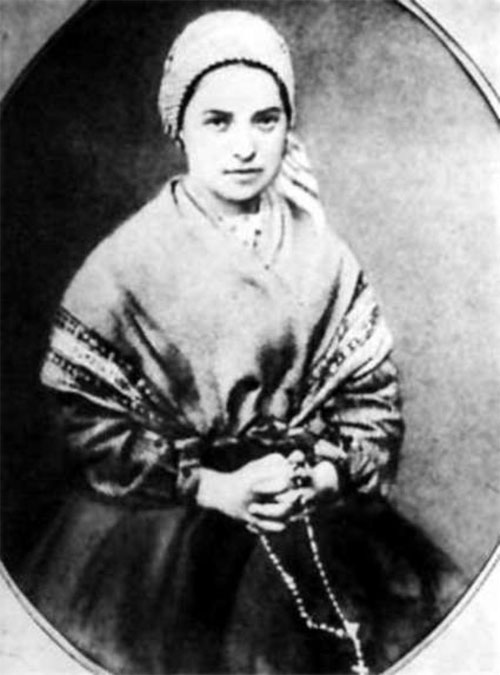
This entry was posted on Wednesday, February 11th, 2015 at 4:23 pm
You can follow any responses to this entry through the RSS 2.0 feed.
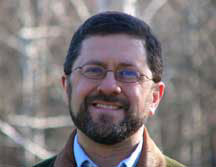 January 28 is the day the Catholic Church honors St. Thomas Aquinas. The Italian saint was a priest and is widely recognized as being one of the most influential figures in the study of theology. Here we have more on St. Thomas Aquinas from Mike Aquilina who he refers to as the “poet laureate of heaven”.
January 28 is the day the Catholic Church honors St. Thomas Aquinas. The Italian saint was a priest and is widely recognized as being one of the most influential figures in the study of theology. Here we have more on St. Thomas Aquinas from Mike Aquilina who he refers to as the “poet laureate of heaven”.
[powerpress]
Check out  Mike’s wonderful site “The Way of the Fathers”
From the Pope Benedict’s audience (from Vatican.va) reflecting on St. Thomas Aquinas….
 The life and teaching of St Thomas Aquinas could be summed up in an episode passed down by his ancient biographers. While, as was his wont, the Saint was praying before the Crucifix in the early morning in the chapel of St Nicholas in Naples, Domenico da Caserta, the church sacristan, overheard a conversation. Thomas was anxiously asking whether what he had written on the mysteries of the Christian faith was correct. And the Crucified One answered him: “You have spoken well of me, Thomas. What is your reward to be?”. And the answer Thomas gave him was what we too, friends and disciples of Jesus, always want to tell him: “Nothing but Yourself, Lord!”
Mike’s book that really helps to pray with St. Thomas you can find it here
This is the poem spoke about in our conversaton:
O Godhead hid, devoutly I adore Thee,
Who truly art within the forms before me;
To Thee my heart I bow with bended knee,
As failing quite in contemplating Thee.
Sight, touch, and taste in Thee are each deceived;
The ear alone most safely is believed.
I believe all the Son of God has spoken :
Than Truth’s own word there is no trucer token.
God only on the Cross lay hid from view,
But here lies hid at once the manhood too :
And I, in both professing my believe,
Make the same prayer as the repentant thief.
Thy wounds, as Thomas saw, I do not see;
Yet Thee confess my Lord and God to be.
Make me blieve Thee ever more and more,
In Thee my hope, in Thee my love to store.
O Thou, memorial of our Lord’s own dying!
O living bread, to mortals life supplying!
Make Thou my soul henceforth on Thee to live;
Ever a taste of heavenly sweetness give.
O loving Pelican! O Jesu Lord!
Unclean I am, but cleanse me in Thy Blood :
Of which a single drop, for sinners spilt,
Can purge the entire world from all its guilt.
Jesu! whom for the present veiled I see,
What I so thirst for, oh, vouchasafe to me :
That I may see Thy countenance unfolding,
And may be blest Thy glory in beholding. Amen.
Tags: disciples, mike aquilina, pope benedict, thomas aquinas
This entry was posted on Wednesday, January 28th, 2015 at 2:54 am
You can follow any responses to this entry through the RSS 2.0 feed.
[powerpress]
From a letter to the Ephesians by Saint Ignatius of Antioch, bishop and martyr
(Nn. 13-18,1: Funk 1, 183-187)
Have Faith in Christ, and love
Try to gather together more frequently to give thanks to God and to praise him. For when you come together frequently, Satan’s powers are undermined, and the destruction that he threatens is done away with in the unanimity of your faith. Nothing is better than peace, in which all warfare between heaven and earth is brought to an end.
None of this will escape you if you have perfect faith and love toward Jesus Christ. These are the beginning and the end of life: faith the beginning, love the end. When these two are found together, there is God, and everything else concerning right living follows from them. No one professing faith sins: no one possessing love hates. A tree is known by its fruit. So those who profess to belong to Christ will be known by what they do. For the work we are about is not a matter of words here and now, but depends on the power of faith and on being found faithful to the end.
It is better to remain silent and to be than talk and not be. Teaching is good if the speaker also acts. Now there was one teacher who spoke, and it was made, and even what he did in silence is worthy of the Father. He who has the word of Jesus can truly listen also to his silence, in order to be perfect, that he may act through his speech and be known by his silence. Nothing is hidden from the Lord, but even our secrets are close to him. Let us then do everything in the knowledge that he is dwelling within us that we may be his temples, and he God within us. He is, and will reveal himself, in our sight, according to the love we bear him in holiness.
Make no mistake, my brothers: those who corrupt families will not inherit the kingdom of God. If those who do these things in accordance with the flesh have died, how much worse will it be if one corrupts through evil doctrine the faith of God for which Jesus Christ was crucified? Such a person, because he is defiled, will depart into the unquenchable fire, as will anyone who listens to him.
For the Lord received anointing on his head in order that he might breathe incorruptibility on the Church. Do not be anointed with the evil odor of the teachings of the prince of this world, that he may not lead you captive away from the life that is set before you. But why is it that we are not all wise when we have received the knowledge of God, which is Jesus Christ? Why do we perish in our stupidity, not knowing the gift the Lord has truly sent us?
My spirit is given over to the humble service of the cross which is a stumbling block to unbelievers but to us salvation and eternal life.
Excerpts from the English translation of The Liturgy of the Hours (Four Volumes) © 1974, International Commission on English in the Liturgy Corporation. All rights reserved.

This entry was posted on Tuesday, January 20th, 2015 at 12:21 pm
You can follow any responses to this entry through the RSS 2.0 feed.
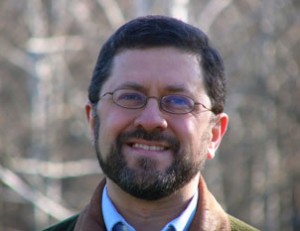 Take a listen to our  conversation with Mike Aquilina about St. Anthony, Church Father
Take a listen to our  conversation with Mike Aquilina about St. Anthony, Church Father
[powerpress]
A quote from St. Anthony:
“I saw the snares that the enemy spreads out over the world and I said groaning, “What can get through from such snares?” Then I heard a voice saying to me, “Humility.”
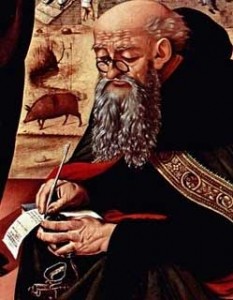 St. Anthony of the Desert, or St. Anthony the Abott, or St. Anthony the Great…no matter what you may call him, he is above all…a SAINT!
St. Anthony of the Desert, or St. Anthony the Abott, or St. Anthony the Great…no matter what you may call him, he is above all…a SAINT!
Saints SQPN.com – Following the death of his parents when he was about 20, Anthony insured that his sister completed her education, then he sold his house, furniture, and the land he owned, gave the proceeds to the poor, joined the anchorites who lived nearby, and moved into an empty sepulchre. At age 35 he moved to the desert to live alone; he lived 20 years in an abandoned fort.
Anthony barricaded the place for solitude, but admirers and would-be students broke in. He miraculously healed people, and agreed to be the spiritual counselor of others. His recommendation was to base life on the Gospel. Word spread, and so many disciples arrived that Anthony founded two monasteries on the Nile, one at Pispir, one at Arsinoe. Many of those who lived near him supported themselves by making baskets and brushes, and from that came his patronage of those trades.
Anthony briefly left his seclusion in 311, going to Alexandria, Egypt to fight Arianism, and to comfort the victims of the persecutions of Maximinus. At some point in his life, he met with his sister again. She, too, had withdrawn from the world, and directed a community of nuns. Anthony retired to the desert, living in a cave on Mount Colzim.
Descriptions paint him as uniformly modest and courteous. His example led many to take up the monastic life, and to follow his way. Late in life Anthony became a close friend of Saint Paul the Hermit, and he buried the aged anchorite, leading to his patronage of gravediggers. His biography was written by his friend Saint Athanasius of Alexandria.
His relationship with pigs and patronage of swineherds is a little complicated. Skin diseases were sometimes treated with applications of pork fat, which reduced inflammation and itching. As Anthony’s intervention aided in the same conditions, he was shown in art accompanied by a pig. People who saw the art work, but did not have it explained, thought there was a direct connection between Anthony and pigs – and people who worked with swine took him as their patron. –Saints SQPN.com
Tags: catholic, catholic podcast, catholic prayer
This entry was posted on Saturday, January 17th, 2015 at 12:00 pm
You can follow any responses to this entry through the RSS 2.0 feed.
[powerpress]
From a Spiritual Canticle of St John of the Cross, priest
The knowledge of the mystery hidden within Christ Jesus
Though holy doctors have uncovered many mysteries and wonders, and devout souls have understood them in this earthly condition of ours, yet the greater part still remains to be unfolded by them, and even to be understood by them.
We must then dig deeply in Christ. He is like a rich mine with many pockets containing treasures: however deep we dig we will never find their end or their limit. Indeed, in every pocket new seams of fresh riches are discovered on all sides.
For this reason the apostle Paul said of Christ: In him are hidden all the treasures of the wisdom and knowledge of God. The soul cannot enter into these treasures, nor attain them, unless it first crosses into and enters the thicket of suffering, enduring interior and exterior labours, and unless it first receives from God very many blessings in the intellect and in the senses, and has undergone long spiritual training.
All these are lesser things, disposing the soul for the lofty sanctuary of the knowledge of the mysteries of Christ: this is the highest wisdom attainable in this life.
Would that men might come at last to see that it is quite impossible to reach the thicket of the riches and wisdom of God except by first entering the thicket of much suffering, in such a way that the soul finds there its consolation and desire. The soul that longs for divine wisdom chooses first, and in truth, to enter the thicket of the cross.
Saint Paul therefore urges the Ephesians not to grow weary in the midst of tribulations, but to be steadfast and rooted and grounded in love, so that they may know with all the saints the breadth, the length, the height and the depth – to know what is beyond knowledge, the love of Christ, so as to be filled with all the fullness of God.
The gate that gives entry into these riches of his wisdom is the cross; because it is a narrow gate, while many seek the joys that can be gained through it, it is given to few to desire to pass through it.
Excerpts from the English translation of The Liturgy of the Hours (Four Volumes) © 1974, International Commission on English in the Liturgy Corporation. All rights reserved.
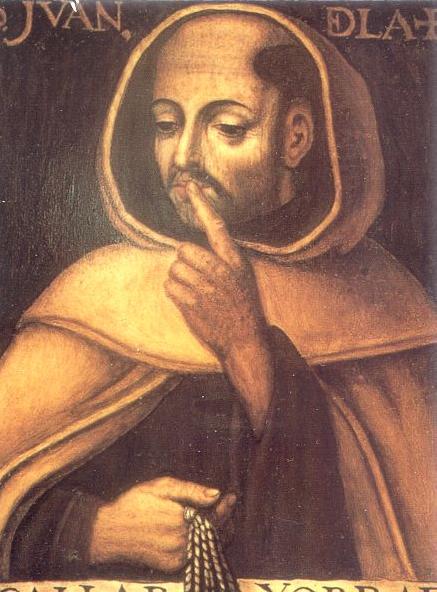
St. John of the Cross
This entry was posted on Tuesday, December 23rd, 2014 at 9:15 am
You can follow any responses to this entry through the RSS 2.0 feed.
[powerpress]
Evil is crushed by the lowly! Â The joy that flows from Mary’s simplicity.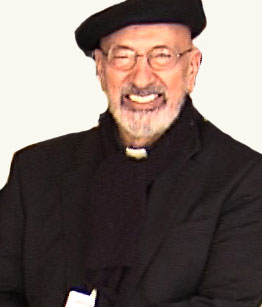
Reading 2Â Heb 10:5-10
When Christ came into the world, he said:
“Sacrifice and offering you did not desire,
but a body you prepared for me;
in holocausts and sin offerings you took no delight.
Then I said, ‘As is written of me in the scroll,
behold, I come to do your will, O God.'”First he says, “Sacrifices and offerings,
holocausts and sin offerings,
you neither desired nor delighted in.”
These are offered according to the law.
Then he says, “Behold, I come to do your will.”
He takes away the first to establish the second.
By this “will,” we have been consecrated
through the offering of the body of Jesus Christ once for all.
Gospel Lk 1:39-45
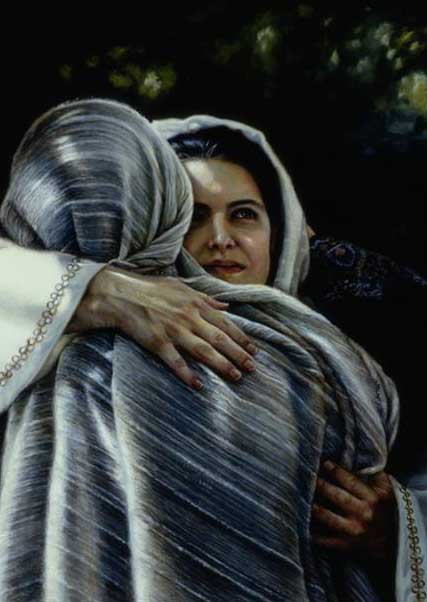
and traveled to the hill country in haste
to a town of Judah,
where she entered the house of Zechariah
and greeted Elizabeth.
When Elizabeth heard Mary’s greeting,
the infant leaped in her womb,
and Elizabeth, filled with the Holy Spirit,
cried out in a loud voice and said,
“Blessed are you among women,
and blessed is the fruit of your womb.
And how does this happen to me,
that the mother of my Lord should come to me?
For at the moment the sound of your greeting reached my ears,
the infant in my womb leaped for joy.
Blessed are you who believed
that what was spoken to you by the Lord
would be fulfilled.”
Msgr. John A. Esseff is a Roman Catholic priest in the Diocese of Scranton. He was ordained on May 30th 1953, by the late Bishop William J. Hafey, D.D. at St. Peter’s Cathedral in Scranton, PA. Msgr. Esseff served a retreat director and confessor to Blessed Mother Teresa.   He continues to offer direction and retreats for the sisters of the missionaries of charity around the world. Msgr. Esseff encountered St.  Padre Pio,  who would become a spiritual father to him. He has lived in areas around the world,  serving  in the Pontifical missions, a Catholic organization established by Bl. Pope John Paul II to bring the Good News to the world especially to the poor. Msgr. Esseff assisted the founders of the Institute for Priestly Formation and continues to serve as a spiritual director for the Institute. He continues to  serve as a retreat leader and director to bishops, priests and sisters and seminarians and other religious leaders around the world.  Â
To obtain a copy of Msgr. Esseff’s book by visiting here
Be sure to visit Msgr. Esseff’s website “Building a Kingdom of  Love”
Tags: Good News, John Esseff, PA, retreat
This entry was posted on Monday, December 22nd, 2014 at 8:04 pm
You can follow any responses to this entry through the RSS 2.0 feed.
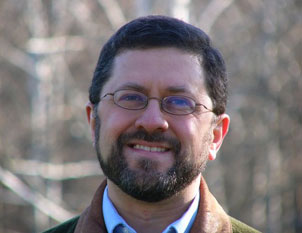 Episode 1 – Witnesses to Tradition. A grand overview of Church tradition as passed down to us by the Fathers of the Church…it’s scope and relevance for our lives today!
Episode 1 – Witnesses to Tradition. A grand overview of Church tradition as passed down to us by the Fathers of the Church…it’s scope and relevance for our lives today!
[powerpress]
Roots of the Faith – From the Church Fathers to You with Mike Aquilina, makes clear that just as an acorn grows into a tree and yet remains the same plant, so the Catholic Church is a living organism that has grown from the faith of the earliest Christians into the body of Christ we know today. Hosted by Kris McGregor
Also visit Mike’s “Discerning Hearts” page for more audio downloads and information!
This entry was posted on Thursday, December 11th, 2014 at 6:12 am
You can follow any responses to this entry through the RSS 2.0 feed.
 We discuss with Fr. Mark Cyza the dogma of the Immaculate Conception of the Blessed Virgin Mary!
We discuss with Fr. Mark Cyza the dogma of the Immaculate Conception of the Blessed Virgin Mary!
[powerpress]
For more on the Immaculate Conception from St. John Paul II:
HOLY MASS ON THE OCCASION OF THE 150th ANNIVERSARY
OF THE DOGMA OF THE IMMACULATE CONCEPTION
OF THE BLESSED VIRGIN MARY
HOMILY OF JOHN PAUL II
Solemnity of the Immaculate Conception of the Blessed Virgin Mary
Wednesday, 8 December 2004
- “Hail, full of grace, the Lord is with you!” (Lk 1: 28).
We address the Virgin Mary several times a day with these words of the Archangel Gabriel. Let us repeat them with fervent joy today, on the Solemnity of the Immaculate Conception, remembering 8 December 1854 when Blessed Pius IX proclaimed this wonderful Dogma of the Catholic faith in this very same Vatican Basilica.
I cordially greet those who are gathered here today, especially the representatives of the National Mariological Societies who have taken part in the International
Mariological Congress, organized by the Pontifical Marian Academy.
I then greet all of you present here, dear brothers and sisters, who have come to pay filial homage to the Immaculate Virgin. I offer a special greeting to Cardinal Camillo Ruini. I renew to him my warmest wishes for the jubilee of his ordination to the priesthood and express to him my deep gratitude for the service that with generous dedication he has and continues to render to the Church as my Vicar General for the Diocese of Rome and President of the Italian Bishops’ Conference.
- How great is the mystery of the Immaculate Conception that the Liturgy presents to us today! A mystery that never ceases to invite the contemplation of believers and inspires the reflection of theologians. The theme of the Congress that has just been mentioned: “Mary of Nazareth welcomes the Son of God into history”, has fostered a deep examination of the doctrine of the Immaculate Conception of Mary as a presupposition for receiving in her virginal womb the Word of God Incarnate, the Saviour of the human race.
“Full of grace”, “κεχαÏιτωµευη”: in the original Greek of Luke’s Gospel, the Angel greets Mary with this title. It is the name that God, through his messenger, chose to use to describe the Virgin. This is how he had always seen and thought of her, ab aeterno (from all eternity).
- In the hymn of the Letter to the Ephesians just now proclaimed, the Apostle praises God the Father “who has blessed us in Christ with every spiritual blessing in the heavenly places” (1: 3). What a special blessing God addressed to Mary from the beginning of time! Mary was truly blessed among women (cf. Lk 1: 42)!
The Father chose her in Christ before the creation of the world, so that she might be holy and immaculate before him in love, preordaining her as the first fruits of filial adoption through the work of Jesus Christ (cf. Eph 1: 4-5).
- The predestination of Mary, like that of each one of us, is linked to the predestination of the Son. Christ is that “seed” that was “to bruise the head” of the ancient serpent, according to the Book of Genesis (cf. Gn 3: 15); he is the Lamb “without blemish” (cf. Ex 12: 5; I Pt 1: 19), immolated to redeem humanity from sin.
With a view to the saving death of the Son, Mary, his Mother, was preserved free from original sin and from every other sin. The victory of the new Adam also includes that of the new Eve, Mother of the redeemed. The Immaculate Virgin is thus a sign of hope for all the living who have triumphed over Satan by the blood of the Lamb (cf. Rv 12: 11).
- Today let us contemplate the humble young girl of Nazareth, holy and blameless before God in love (cf. Eph 1: 4), in that “love” whose original source is God himself, one and triune.
How sublime an act of the Most Holy Trinity is the Immaculate Conception of the Mother of the Redeemer! Pius IX, in the Bull Ineffabilis Deus, recalls that the Almighty “by one and the same decree had established the origin of Mary and the Incarnation of divine Wisdom” (Pii IX Pontificis Maximi Acta, Pars prima, p. 559).
The Virgin’s “yes” to the announcement of the Angel fits into the reality of our earthly condition, with humble respect for the divine will to save humanity not from history but in history. Indeed, ever preserved free from all taint of original sin, the “new Eve” benefited uniquely from the work of Christ as the most perfect Mediator and Redeemer. The first to be redeemed by her Son, she shares to the full in his holiness; she is already what the entire Church desires and hopes to be. She is the eschatological icon of the Church.
- Consequently the Immaculate Virgin, who marks “the very beginning of the Church, Bride of Christ, without spot or wrinkle, shining with beauty” (Preface), always precedes the People of God in the pilgrimage of faith, bound for the Kingdom of Heaven (cf. Lumen Gentium, n. 58; Redemptoris Mater, n. 2).
In Mary’s Immaculate Conception the Church sees projected and anticipated in her most noble member, the saving grace of Easter.
In the event of the Incarnation the Church encounters Christ and Mary indissolubly united: “he who is the Church’s Lord and Head and she who, uttering the first fiat of the New Covenant, prefigures the Church’s condition as spouse and mother” (Redemptoris Mater, n. 1).
- To you, Virgin Immaculate, predestined by God above every other creature to be the advocate of grace and model of holiness for his people, today in a special way I renew the entrustment of the whole Church.
May you guide your children on their pilgrimage of faith, making them ever more obedient and faithful to the Word of God.
May you accompany every Christian on the path of conversion and holiness, in the fight against sin and in the search for true beauty that is always an impression and a reflection of divine Beauty.
May you obtain peace and salvation for all the peoples. May the eternal Father, who desired you to be the immaculate Mother of the Redeemer, also renew in our time through you, the miracles of his merciful love. Amen!
Tags: Mark Cyza
This entry was posted on Monday, December 8th, 2014 at 8:50 am
You can follow any responses to this entry through the RSS 2.0 feed.
[powerpress]
From a sermon by Saint Anselm, bishop
Virgin Mary, all nature is blessed by you
Blessed Lady, sky and stars, earth and rivers, day and night – everything that is subject to the power or use of man – rejoice that through you they are in some sense restored to their lost beauty and are endowed with inexpressible new grace. All creatures were dead, as it were, useless for men or for the praise of God, who made them. The world, contrary to its true destiny, was corrupted and tainted by the acts of men who served idols. Now all creation has been restored to life and rejoices that it is controlled and given splendour by men who believe in God. The universe rejoices with new and indefinable loveliness. Not only does it feel the unseen presence of God himself, its Creator, it sees him openly, working and making it holy. These great blessings spring from the blessed fruit of Mary’s womb.
Through the fullness of the grace that was given you, dead things rejoice in their freedom, and those in heaven are glad to be made new. Through the Son who was the glorious fruit of your virgin womb, just souls who died before his life-giving death rejoice as they are freed from captivity, and the angels are glad at the restoration of their shattered domain.
Lady, full and overflowing with grace, all creation receives new life from your abundance. Virgin, blessed above all creatures, through your blessing all creation is blessed, not only creation from its Creator, but the Creator himself has been blessed by creation.
To Mary God gave his only-begotten Son, whom he loved as himself. Through Mary God made himself a Son, not different but the same, by nature Son of God and Son of Mary. The whole universe was created by God, and God was born of Mary. God created all things, and Mary gave birth to God. The God who made all things gave himself form through Mary, and thus he made his own creation. He who could create all things from nothing would not remake his ruined creation without Mary.
God, then, is the Father of the created world and Mary the mother of the re-created world. God is the Father by whom all things were given life, and Mary the mother through whom all things were given new life. For God begot the Son, through whom all things were made, and Mary gave birth to him as the Saviour of the world. Without God’s Son, nothing could exist; without Mary’s Son, nothing could be redeemed.
Truly the Lord is with you, to whom the Lord granted that all nature should owe as much to you as to himself.
Excerpts from the English translation of The Liturgy of the Hours (Four Volumes) © 1974, International Commission on English in the Liturgy Corporation. All rights reserved.
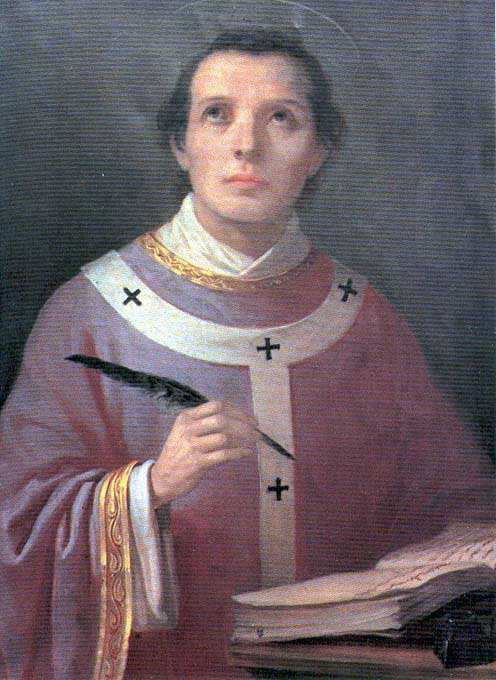 “
“
This entry was posted on Monday, December 8th, 2014 at 8:49 am
You can follow any responses to this entry through the RSS 2.0 feed.
[powerpress ]
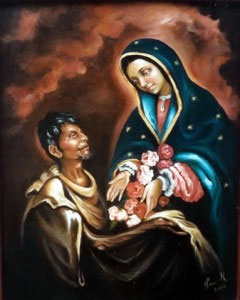
Please visit the Discerning Hearts Our Lady of Guadalupe page for the text and audio for the remaining days.
Day Six
Holy Mary, comfort of the troubled, you sought out Juan Diego when in fear and confusion he took a different route to avoid encountering you. Then you restored his hope and confidence so he could carry out the task you had entrusted to him. Many people today face decisions of life and death filled with fear and confusion. Mother, we ask you to restore their trust and hope in God so that their actions will always affirm the sanctity of human life.
Our Father … Hail Mary … Glory be …
Tags: catholic, catholic podcast, catholic prayer, cathollc spirituality
This entry was posted on Monday, December 8th, 2014 at 5:56 am
You can follow any responses to this entry through the RSS 2.0 feed.
[powerpress]
Please visit the Discerning Hearts Our Lady of Guadalupe page for the text and audio for the remaining days.
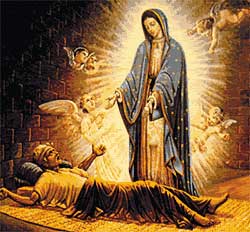 Day Five
Day Five
Virgin gentle in mercy, in Juan Diego’s anxiety to bring a priest to his dying uncle he failed to keep his appointment with you. Yet, you rewarded his filial love by restoring his uncle to health. Your compassion allowed Juan Diego to fulfill the mission you gave him, returning to the bishop with the proof the bishop sought. Teach us, Mother, to put God’s holy will ahead of all created things, including our loved ones, and help remove the obstacles that prevent us from following God’s will.
Our Father … Hail Mary … Glory be …
Tags: catholic, catholic podcast, catholic prayer, cathollc spirituality
This entry was posted on Sunday, December 7th, 2014 at 5:05 am
You can follow any responses to this entry through the RSS 2.0 feed.
Dr. Adam English has done an outstanding job of bringing to life the story of St. Nicholas of Myra.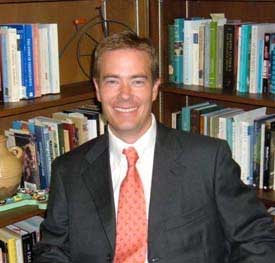  Going deep into the historical documents, he travails between the myths and the reality of this extraordinary bishop who would become an iconic saint.  I love this kind of read…steeped in rich history and filled with an enthusiastic joy for the adventure of discovery.
 Going deep into the historical documents, he travails between the myths and the reality of this extraordinary bishop who would become an iconic saint.  I love this kind of read…steeped in rich history and filled with an enthusiastic joy for the adventure of discovery.
[powerpress]
The book can be found here
“Adam English convinces us that the St. Nicholas we know is a cultural icon, as much Coca-Cola as Christian saint. But his real gift is in resurrecting through his painstaking historical detective work a flesh and blood St. Nicholas, whose courage and Christian generosity are worthy of emulation.”
–Greg Garrett, author of One Fine Potion“A sensitive, erudite, and accessibly written introduction to the life and times of St. Nicholas, a fourth-century bishop of Myra in what is now Turkey. Having devoted his life to serving Jesus Christ, the real St. Nicholas invites us to a truer and more joyful celebration of Christmas.”
–Matthew Levering, Professor of Theology, University of Dayton
This entry was posted on Saturday, December 6th, 2014 at 1:13 am
You can follow any responses to this entry through the RSS 2.0 feed.

